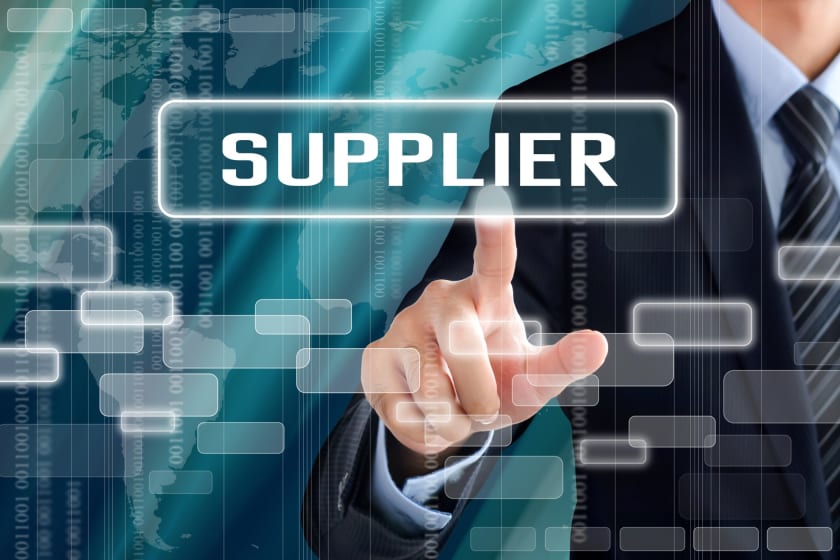What Is Supplier Management? How Can You Get a Job in Supplier Management?



Globalisation has shifted the foundations of today’s enterprises, making business operations more innovative, competitive, and sophisticated. As a result, to maximise business success, all companies interact with suppliers for the distribution of diverse goods and services. Today’s supply chains are comprised of a big, complicated ecosystem of suppliers and trade partners, each of whom adds value to the marketplace as they meet the needs of service. Supplier management is critical since suppliers are an integral element of every organisation.
What is supplier management?
Since supplies are crucial to an organisation’s efficient operation, both the supplier and the company must work together appropriately and successfully. Supplier management is a set of procedures that allows a firm to find, qualify, onboard, transact with, and work with the best suppliers for their needs. This involves identifying, selecting, and managing relevant suppliers, as well as a doing realistic review of their effectiveness to guarantee they are offering the best value for the organisation’s third-party needs.
Importance of supplier management
The capacity to acquire, maintain, and successfully interact with suppliers is critical for organisations in the product-delivery sector to satisfy consumer expectations for high-quality items supplied on schedule and within budget. The strength of a company’s supplier relationships can account for up to 50% of its worth.
Source: https://www.ibm.com/downloads/cas/PKQXXQJM
When it comes to determining why companies require supplier management, there are two major pillars to consider:
- Determining if the suppliers are meeting the organisation’s needs
- When dealing with suppliers over their lifespan, uncovering opportunities for improvement
These two criteria emphasise the primary reason for supplier management: to guarantee that a business is getting the most value from its suppliers for its requirement(s), considering the resources the business has invested in them.
Supplier management systems have become increasingly complicated, time-consuming, and costly as supply chains have evolved into global networks of networks. The issues are amplified by political factors. Recent events have highlighted the fundamental relevance of continued connections between a firm and its partners and suppliers, as well as the importance of such ties in preserving supply chain efficiency and adaptability.
Types of supplier relationship

Here are five types of supplier management relationships, each with its function, importance, and need.
Buy the market
This is indeed a straightforward relationship that is best suited to ordinary buyer-seller transactional relationships for specific items or services. Typically, it consists only of contractual fulfilment, with little or no contact beyond stating the request and executing it.
Ongoing relationship
The ongoing connection is a publicly (or informally) established status in which one supplier is favoured above others and contracts are for longer periods. There is greater information sharing and a fairly strong bond between the two parties.
Partnership
Partnerships are characterised by enhanced trust and comprehensive communication of knowledge and commercial goals, especially as compared to continuing connections, and are traditionally longer-term arrangements than the other types of relationships discussed so far.
Strategic alliance
A long-term connection in which both sides have decided to collaborate, generally under the terms of an exclusive agreement, with clear business goals and objectives. There may be benefits between the two, whether the agreement is official or unstructured. This sort of supplier connection necessitates a higher level of engagement than that of other types of supplier partnerships.
Backward integration
Backward integration occurs when a company owns the supplier as part of its operations. As a response, there is a cohesive culture and, in the ideal world, complete information and plan sharing. Suppliers and organisations are essentially the same things.
What does a supplier relationship manager do?
A supplier manager is in charge of creating and maintaining connections with all companies with which the organisation does business. Managers also collaborate with key stakeholders to ensure that everyone understands what the company wants and what suppliers have to offer.
The basic purpose of supplier management stays the same, even though various sectors have distinct categories of important suppliers and each company has its specialised mix. Identifying and segmenting critical supplier partnerships, giving leadership and direction to supplier teams, and providing oversight and continuing control for all supplier relationships are all essential tasks of the supplier manager.
Some vendors are more important than others in terms of business resilience, service effectiveness, scalability, and, consequently, profitability. A smartphone maker’s stationery supplier, for example, has minimal effect on profitability, but its primary technology supplier does, making it a critical strategic partner. Any threat to the operations of the electronics producer is a huge threat to the smartphone manufacturer.
How to get a job in supplier management

A company’s supply chain may be transformed by optimising it. Amazon.com redesigned the traditional supply chain formula to eliminate inventory delays and decrease prices above what competitors can provide. Supply chain management is the secret formula in every case, saving both the business and the client a significant amount of time, money, and effort.
Supply chain managers are responsible for three major functions, each of which necessitates a distinct combination of academic and practical business understanding.
- Logistics: Sales and operations teams must work together to enhance procurement procedures.
- Operations: Product flows must be managed, warehousing procedures must be optimised, and transportation networks must be restructured.
- Finance: Fine-tuning budgets to appropriately represent inventory management expenses; evaluating and contrasting various inventory recovery strategies.
A bachelor’s degree in supply chain management, logistics, or a similar discipline is required for becoming a supplier manager. Supply chain management degrees are offered by many highly regarded and approved institutions and universities. The following are examples of conventional supply chain management training courses:
- Business management
- Business analytics
- Finance
- Marketing
- Accounting
Ambitious supplier managers typically need to have early job experience after receiving a bachelor’s degree. Some firms will make accommodations if someone does not have a university degree in supply chain operations. With an undergraduate degree or comparable job experience, anyone might be able to secure an entry-level supply chain management position. Although certification in supply chain management isn’t required, it does benefit when applying for positions. It implies that you have more knowledge and expertise in supply chain management than a bachelor’s degree in supplier management could give.
Internships and jobs in supplier evaluation, distribution channels, inventory management, and company operations will expose potential supplier managers to the fast-paced work, data-driven decision-making process, and inter-department communication required in supplier management. This type of hands-on training is extremely important in the early phases of a career, and some firms may even pay for their workers’ graduate-level schooling as a perk.
Why should you choose a job in the supply chain industry?
Here are some of the reasons why a logistics job offers so much variety to so many people. Here are a few examples:
- It provides users with a comprehensive perspective of the entire company. Individuals study the business of the suppliers and the business of the consumers.
- Within the company, there is a lot of room for advancement, including changing occupations.
- It’s an ever-changing, ever-expanding profession.
- It affects several departments, including manufacturing, purchasing, transportation, accounting, and finance, as well as marketing, warehousing, R&D, and sales.
- It gives individuals a wide range of experiences; no two weekdays are ever the same.
- Supplier management is gradually impacting C-suite choices and influencing entire business operations.
- Supplier management is quickly providing a sure way to the top of the corporate ladder.
What is a supplier management process flow?
The stages involved in a successful buyer-supplier relationship are listed in a supplier management flow chart. The steps in the supplier management flow are listed below.
Qualification
The first stage in the supplier management process is to qualify the supplier. Qualification entails assessing suppliers to see if they are capable of delivering the required products or services to the buyer’s specifications.
Onboarding
As a component of the onboarding process, the relevant information about the chosen providers is acquired. Internal procedures and systems must be adjusted or updated as needed, and key stakeholders must be notified so that the firm recognizes and may trade with the new supplier.
Classification
The categorisation of suppliers is a crucial step in the supplier life-cycle management process. The technique of categorising suppliers into distinct quadrants is known as supplier segmentation. It is based on a set of established parameters such as supply risk, total budget, the total cost of ownership, reliability, revenue, efficiency, and much more.
Collaboration
Supplier collaboration and cooperation is a method that allows suppliers and buyers to work together to improve processes and develop new products and services. As per a recent McKinsey report, companies that interact closely with their suppliers develop two times faster than those that do not. Through operational and quality improvements, as well as product or service innovation, increased cooperation between consumers and suppliers strengthen the bond and potential value.
Source: https://www.mckinsey.com/practice-clients/operations/the-power-of-successful-supplier-collaboration
Evaluation
This stage is intended to assess a supplier’s performance and verify that the contract requirements are adhered to. It is based on a range of indicators such as delivery time, pricing, manufacturing, performance, and service to monitor a supplier’s performance and ensure they match the contract’s conditions.
Conclusion
Due to the globalisation of economies, including suppliers in your company operations has become unavoidable. A good supplier management approach not only helps you get the most out of your company’s needs but also provides you with a competitive advantage. This field has something for everyone, including those who appreciate physical exercise, those who prefer cerebral and/or analytical pursuits, and those who want a mix of both.



















